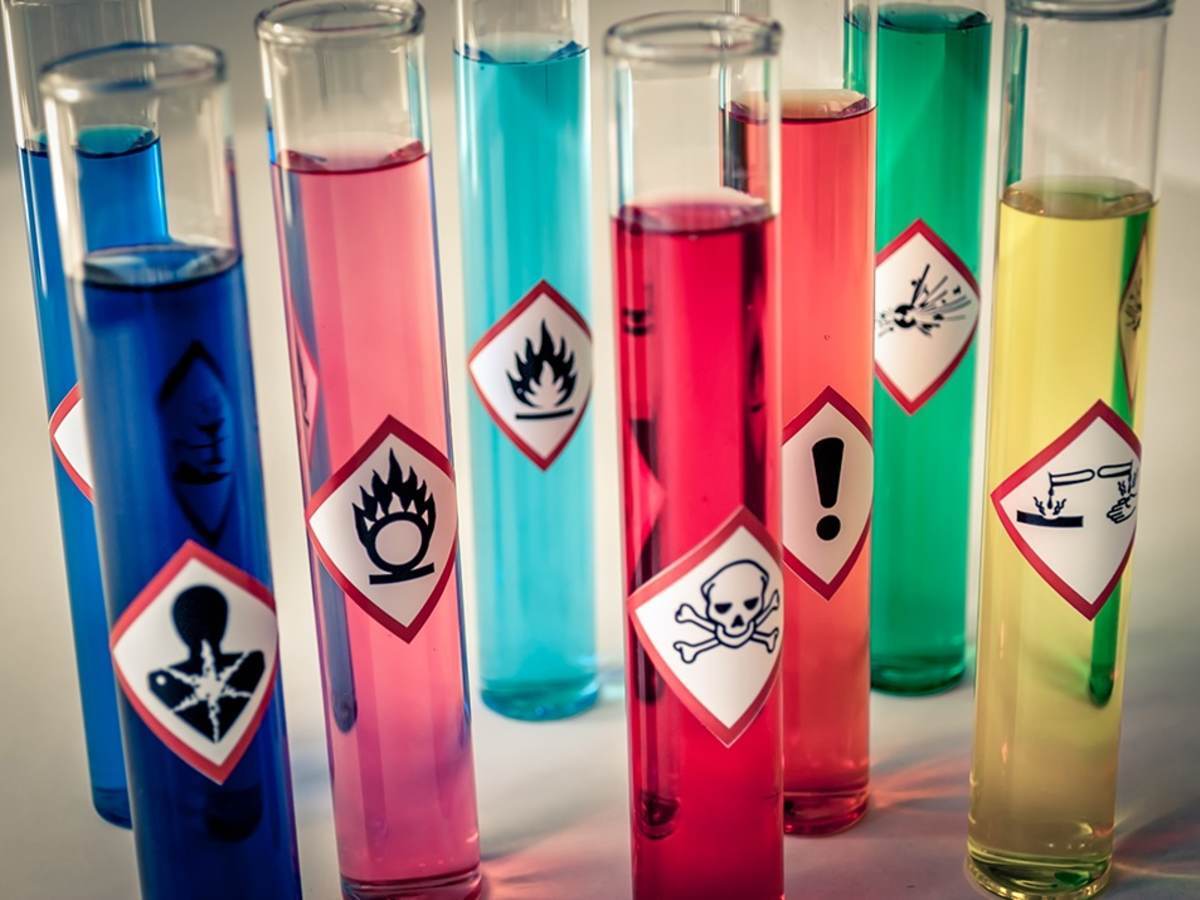November 26, 2024
By Dr. Martina Schneider, regulatory affairs manager, and Klaudia Sostaric, senior regulatory specialist, Supply Chain team, UL Solutions
On November 20, 2024, the European Union has published in the Official Journal Commission Delegated Regulation 2024/2865 to amend Regulation (EC) No 1272/2008 (CLP). This amendment is part of the overall CLP revision process which already included the Commission Delegated Regulation (EU) 2023/707 introducing the new hazard classes (see previously published UL Solutions news article here).
The following most important aspects regarding the classification procedure, labelling requirements Poison center notifications were identified:
Classifications of Hazardous Chemicals
Article 4 on general obligations to classify was updated with the possibility to classify a substance or mixture differently depending on the form or physical state, but not lower than the harmonized classification if available in part 3 of Annex VI.
Article 5 includes new provisions on the procedure for classification of substances containing more than one constituent, also known as MOCS (more than one constituent substances). The classification procedure for CMR and ED endpoints and PBT and PMT properties should consider information on the known constituents of the substance and information on the substance itself. Substances containing more than one constituent which are extracted from plants or plant parts are exempted from these provisions.
Article 10 clarifies that where an M-factor is not given in Part 3 of Annex VI, an M-factor shall be set based on available data for the substance.
Labelling
New label formatting rules
The revision adopts the following new mandatory label formatting rules concerning the font size, letter spacing and color (Article 31, Annex I):
- Minimum font sizes according to the capacity of the package (1.2.1.4 of Annex I):
- Package not exceeding 0.5L: font x-height 1.2mm
- Package greater than 0.5L but not exceeding 3L: font x-height 1.4mm
- Package greater than 3L but not exceeding 50L: font x-height 1.8mm
- Package greater than 50L but not exceeding 500L: font x-height 2.0mm
- Package greater than 500L: font x-height 2.0mm
- The text shall be printed in black on a white background;
- A single, easily legible font without serifs shall be used;
- The distance between two lines shall be at least 120% of the font size;
- The letter spacing shall be appropriate for the selected font to ensure easy legibility.
For inner packaging with contents not exceeding 10ml, the font size can be smaller than indicated above, as long as it remains easily legible. This is important for placing critical statements like hazard or EUH statements, provided that the outer packaging meets the requirements of Article 17 to CLP.
Label content
Following the introduction of the new hazard classes for endocrine disruptors, persistent, bioaccumulative and toxic/very persistent and very bioaccumulative (PBT/vPvB) and persistent, mobile and toxic/very persistent and very mobile (PMT/vPvM) substances, these substances shall be also identified on the label if contributing to the classification of the mixture.
In case of exemptions from labelling and packaging requirements due to the size, shape or form where it is impossible to meet the requirements of general rules for the application of labels, the minimum information requirement on the label of the inner package has changed from four to five elements with the new element being added as signal words (Section 1.5.1.2 of Annex I).
In addition, the replaced Section 1.5.2.4.1 of the revision specifies conditions under which label elements required by Article 17 to CLP may be omitted from inner packaging if the contents do not exceed 10ml.
To ensure safety and the protection of human health, Part 3 and Part 5 of Annex II of the amended CLP introduce specific rules for labelling and packaging of substances or mixtures supplied via refill stations and without packaging, including specific requirements for fuel refill stations.
While the CLP Regulation initially allowed the use of fold-out labels only when the general rules for label application couldn’t be met due to packaging size, form or shape, this revision provides greater flexibility regarding the use of fold-out labels by approving their regular use. For that, the fold-out labels shall follow the formatting rules and meet specific requirements set out under the newly added Section 1.2.1.6 of Annex I of the CLP for the content on the front, inner and back pages.
Based on the newly inserted Article 34a to the revision, digital labels may be used in addition to the physical label. The digital label is accessible via a data carrier which shall be firmly affixed or printed on the physical label or on the packaging next to the label. While mandatory label elements set out under Article 17 of the CLP shall be provided on the physical label, suppliers may decide to include supplemental information referred to in Article 25(3) on a digital label only. In such case, the data carrier of the physical label shall be accompanied by the statement, “More hazard information available online,” or by a similar indication. The applicable formatting requirements for digital labels are set out in Article 34b of the amendment.
To ensure that advertisements for hazardous substances and mixtures contain the most important information in terms of safety and protection of human health and the environment, all advertisements of such (with derogations for non-visual ones) must contain, as applicable, the hazard pictograms, signal words, hazards statements and supplemental EUH statements. In addition, any advertisement for such substances or mixtures sold to the general public must also include the statement “Always follow the information on the product label.” In the event of distance sales, the online offer of a hazardous product shall clearly and visibly stipulate the label elements.
Updating information on labels
The revision outlines the obligation for suppliers to update their labels after a change in the classification or labelling of their substance or mixture (Article 30). The specified deadlines are:
- If there is a change in the classification or labelling that results in a new hazard class or a more severe classification, or requires new supplemental information on the label, the supplier must update the label without undue delay and no later than 6 months after the new evaluation results are obtained by that supplier;
- For any other changes in classification or labelling, the supplier must update the label without undue delay and no later than 18 months after the new evaluation results are obtained by that supplier;
- If the change in classification or labelling is due to a harmonized classification and labelling covered by an ATP, then the date(s) set out in the ATP take priority;
- If the substances or mixtures fall within the scope of detergent or biocide regulations, then the date(s) specified in those regulations take priority.
Poison Center Notification
The Regulation introduces an obligation for distributors to submit emergency health response information to appointed bodies when distributing hazardous mixtures across member state borders, or rebranding or relabeling the mixtures.
This obligation, which also provides the distributors flexibility around their own supply chain, does not apply if the distributors can demonstrate that the same information has already been submitted to the relevant appointed body by importers and downstream users.
Other Changes
The act also makes changes to the process of harmonized classification and labelling (CLH), e.g. by prioritizing groups of substances. The changes will also allow the Commission to initiate classification proposals in the future (Article 36 - 38).
Regarding the C&L notification, in the future, notifiers need to indicate the reason for divergence from the most severe classification or add the reason for introducing a more severe classification per hazard class compared to those already included in the inventory (article 40).
Transition Period
The regulation enters into force on the 20th day after its publication in the Official Journal of the EU. Changes will have to be implemented either with the date of entering into force or with a transition time of 18 or 24 months depending on the requirement.
e.g. the new timescales on updating labels or the new requirements related to the classification changes will have to be implemented 18 months after the entry into force of this Regulation. The new font size and label formatting requirements will have to be implemented 24 months after the entry into force of this Regulation.
Recommendation
Start to evaluate the impact of the new provisions on the classification, labelling for your products, to ensure a smooth transition.
Reference
Regulatory Roundup Newsletter
Never miss an update
UL Solutions, the global safety science leader, can keep you updated on the latest events with a variety of materials, ranging from the latest regulatory news, webinars, white papers, events, industry insights and more.
Subscribe to our monthly Regulatory Roundup Newsletter and stay up to date on current and upcoming regulations and all the latest chemical industry news.
Safety Data Sheet (SDS) Authoring and Labeling Software and Services
Create, maintain and distribute comprehensive SDSs and labels to meet your increasingly complex global compliance requirements.
Chemical Regulatory Compliance
Manage your chemical compliance needs with the help of global regulatory expertise and leading resources.
Chemical Compliance Training
We provide a series of chemical regulatory training programs designed to help understand the diverse set of requirements and how to confront them.
Get connected with our sales team
Thanks for your interest in our products and services. Let's collect some information so we can connect you with the right person.





